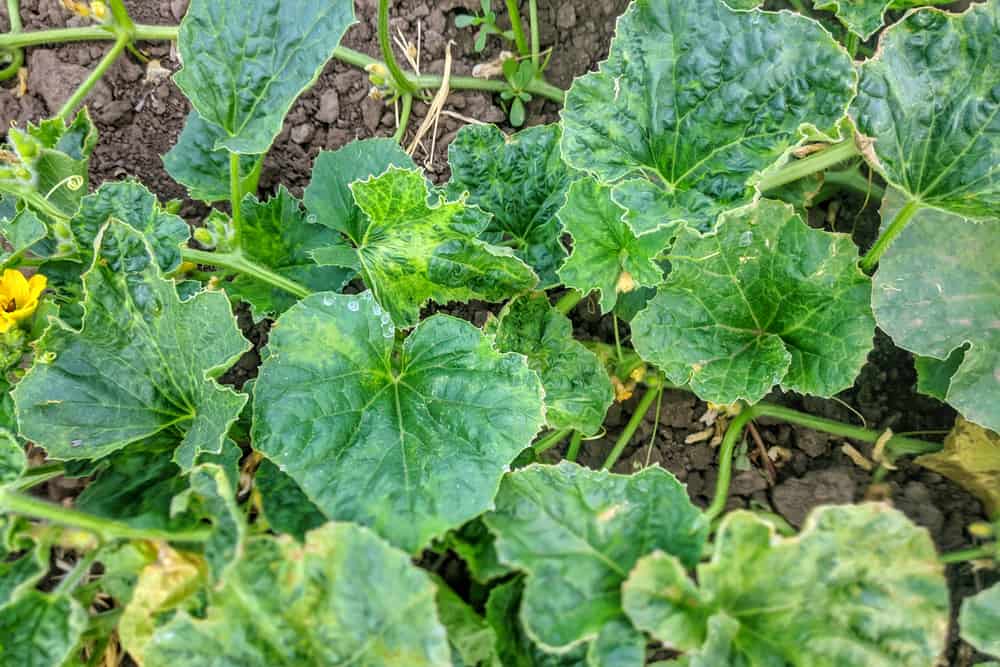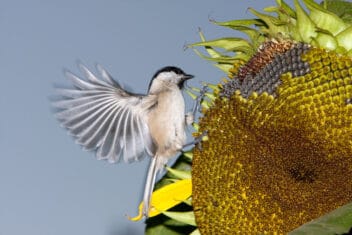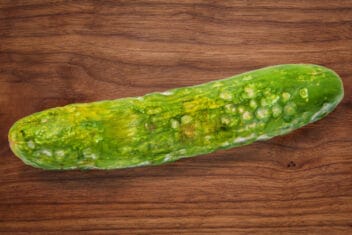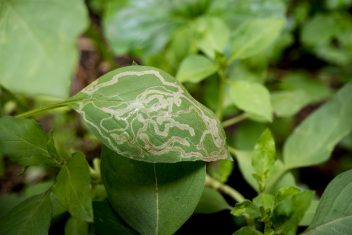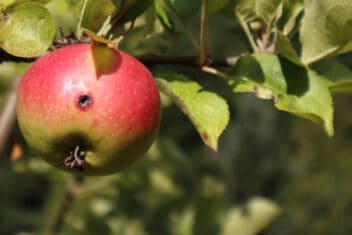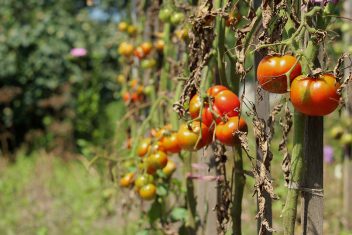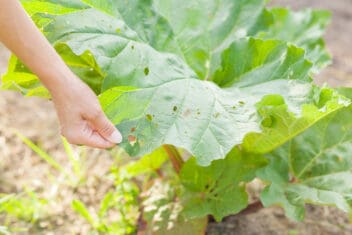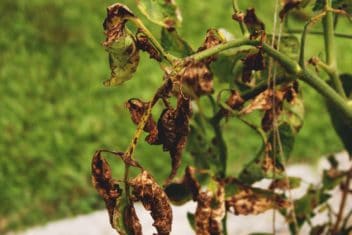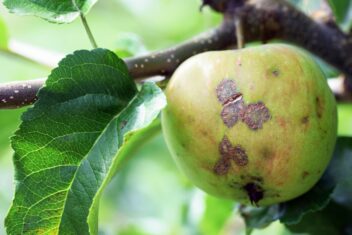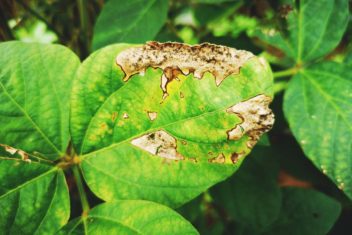The joy of growing fresh, sun-warmed melons can quickly and easily change to disappointment when they get affected by diseases.
In some seasons, melon diseases can be prolific, and in other seasons they are less of an issue, but the risk for melons is always there, especially in certain areas and weather.
Don’t despair, though. You can always get a healthy bumper melon harvest with a little effort and preparation.
Don’t give up if you’ve had disease issues with your melons. Let us share our tips with you so you can enjoy your harvests.
1. Charcoal Rot
This is one of the most severe melon diseases and may be one of the most common. It’s a soil-borne pathogen called Macrophomina phaseolina that has more serious effects when the melon plant is struggling from lack of water or nutrients.
This pathogen can live up to 12 years in the soil. Charcoal rot is a sneaky disease because it affects the plant’s stem near the soil just after being transplanted, but the effects don’t become apparent until around harvest time.
The leaves begin to yellow just when you think the melons aren’t too far from being ready. Water-soaked lesions appear on the stem. As the lesions get worse, they girdle the stem. They will also ooze a yellow gum that dries and turns a charcoal color, hence the name.
Eventually, the plant dies before the fruit is fully ripened.
Treatment of Charcoal Rot
Unfortunately, once this disease is in the soil, it’s too late for treatment. Avoiding it is the only defense, so let’s look at the conditions that charcoal rot needs to infect your melons.
- Water-stressed plants are prone to infection. Make sure you irrigate correctly. If you plant melons and hope for the best, you will end up with diseases like charcoal rot. Water well, or set up an irrigation system suitable for your environment.
- Be sure to rotate crops. Failing to do this enables soil-borne pathogens to develop in the soil. This is important when planting crops from the same family or those crops that attract the same diseases.
- Lack of nutrition invites disease. Don’t allow the soil to become depleted of nutrients, so you should feed the earth well before planting melons and make sure you provide plenty of fertilizer throughout the growing season. Better yet, do a soil test and treat accordingly.
- Provide good drainage. Don’t plant in soil where the water doesn’t drain away. This sets you up for all manner of problems.
All of these tips apply to creating healthy plants in general and especially for fungal diseases.
2. Monosporascus Root Rot
Just the other names this fungal disease (Monosporascus cannonballus) goes by should strike fear into the melon gardener. The melon diseases vine decline, sudden death, sudden wilt, and melon collapse are all Monosporascus root rot..
Just the specific epithet alone should tell you that this disease slams into plants like a cannonball.
The roots are affected early in the plant’s life, but above ground, you may not notice any issues until it’s too late.
Further into the season, the vine collapses or dies suddenly. Underground, the small roots die off and lesions cover the bigger roots, preventing the roots from providing nutrients in the soil to the rest of the plant. Clay and silt soils are more likely to harbor this disease.
You may notice stunted plants and fruit, and leaves dying off as the disease progresses. Once you dig up an infected plant that is advanced in the infection, you’ll see black lumps on the roots including the tap root. These are the fruiting bodies of the fungus that help it to spread.
If you have had this issue with melons, don’t plant any cucurbits in this area again for at least five years, especially cantaloupe.
Treatment of Monosporascus Root Rot
- Practice good crop rotation. This fungus builds up over time when the same thing is planted in the same spot too often.
- Soil solarization may be effective, though some studies have shown it’s limited with this disease due to Monosporascus cannonballus’ ability to grow at high temperatures.
- Keep soil healthy and weed-free. Garden hygiene is important so make sure you keep weeds away from melon areas, feed the soil well, and wash garden tools regularly before using them in the soil around melon plants.
- Choose resistant cultivars when you can find them.
3. Pythium Sudden Wilt
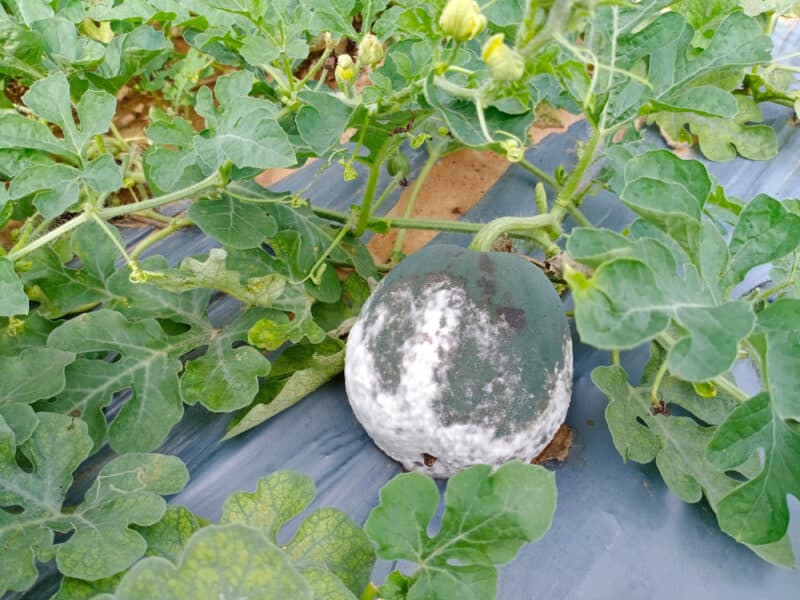
Particularly damaging to watermelons, Pythium is a genus of fungal pathogens initially found in large agricultural fields of melons. It can cause havoc in a small home garden melon patch. None of the melon diseases are fun, but this one is extra annoying.
The small feeder roots are infected first before the lateral and tap roots become infected, leading to wilting and death.
Pythium love wet soil, so the disease is often found in seasons wetter than normal, especially combined with high humidity levels. If the plant was water-stressed before sitting in soggy soil, Pythium will likely kill the melon plant. It also causes the fruit to rot.
The sign that suggests Pythium is present is the temporary wilting of plants during the day’s heat. This is followed by the sudden collapse and death of the vine.
Treatment of Pythium Wilt
- Plant melons in free-draining soil that will drain water away even in heavy rainfalls.
- Irrigate so the melon plant doesn’t become stressed during the day’s heat.
- If you suspect Pythium wilt, some fungicides work. Subdue is highly effective but not for use on food crops. You can use it to treat the soil well in advance of planting, though. A product that contains the beneficial bacterium Bacillus subtilis also works.
- Once Pythium has infected the melon plant, you can’t save it. The fungicide is to try and keep any remaining plants that are not showing signs of infection.
- Practice good crop rotation.
4. Gummy Stem Blight
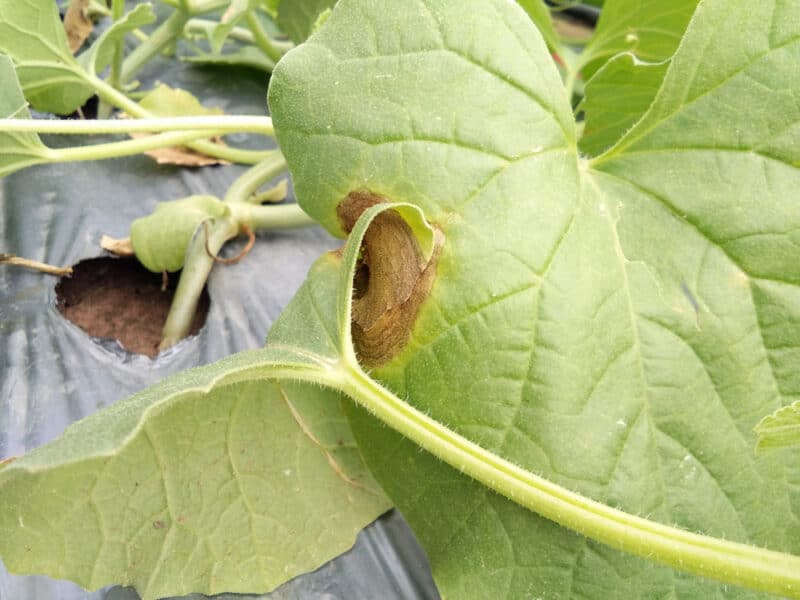
Also known as black rot, gummy stem blight (Didymella bryoniae syn. Mycosphaerella melonis) will also infect pumpkins, squash, and cucumber.
Unlike soil-borne pathogens, this fungal pathogen lives in all of the plant parts above the soil, such as stems, leaves, vines, and fruit. It can also live on dead plant debris.
The first sign is usually oval-shaped cankers on the vine and stems. A brown sticky gum will ooze from them. The leaves will show brown or black necrotic spots that start at the edges of the foliage before moving into the center and taking up the whole leaf.
As the plant dies and the lesions become advanced, you may see tiny black spots, which are the fruiting bodies of the fungus. You will need a magnifying glass to see them.
The melons also get lesions that look like large water-soaked spots that may also ooze the sticky brown gum.
Eventually, the plant dies, and the melons are not edible.
Although gummy stem blight may look like other diseases of melons, the giveaway is the lesions on the stem and vines close to leaf nodes and the gummy mixture that oozes from them.
Treatment of Gummy Stem Blight
- Fungicides may be helpful, especially when temperatures average 61-75ºF with high humidity. They won’t eradicate the disease but they can be used preventatively. Choose a fungicide that contains mancozeb.
- Rotate crops regularly every two or three years.
- Buy seeds and seedlings from reputable sources so they are free of pathogens.
- Inspect melon seedlings often and remove any you think are infected. Remove any cucurbits near the infected plants as well.
5. Cucumber Green Mottle Mosaic (CGMM)
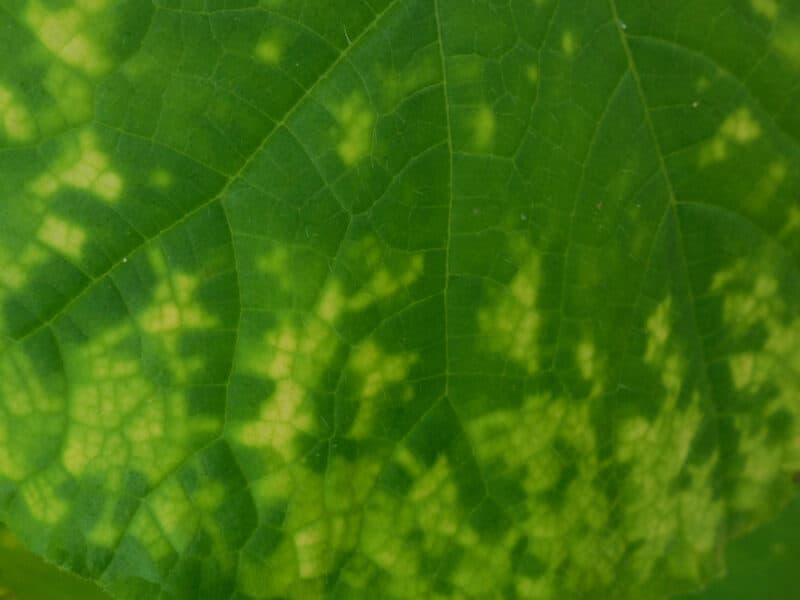
This is a reasonably new virus in the US, though it’s present, and one we need to be aware of. It affects all cucurbits, especially melons and, in particular, watermelons. Don’t you love new melon diseases? As if we didn’t have enough?
The symptoms can be seen on the leaves and vines, and it causes significant yield loss for the home gardener. It’s easily spread and overwinters in infected plant material left in the garden.
You will see a light and dark green mosaic pattern on the leaves. Older leaves take on a bleached appearance, and eventually, the foliage drops off, especially if the weather is cooler than usual. Growth is stunted, and yield is seriously affected.
Sometimes the fruit looks unaffected, or it can be mottled, distorted or have streaky skin. The inside of the melon will be unripe and often colorless.
This virus is not spread through insects. It’s spread by way of infected seeds or seedlings and garden tools.
There is no cure, so prevention is your only option.
Treatment for Cucumber Green Mottle Mosaic Virus
- Practice good crop rotation. Don’t plant cucurbits in the same spot for two to three years.
- Clean hands and garden tools regularly.
- Remove all debris from the garden and keep the area free of weeds.
- Don’t plant cucurbit crops too close to each other.
- Buy certified disease-free plants.
6. Downy Mildew
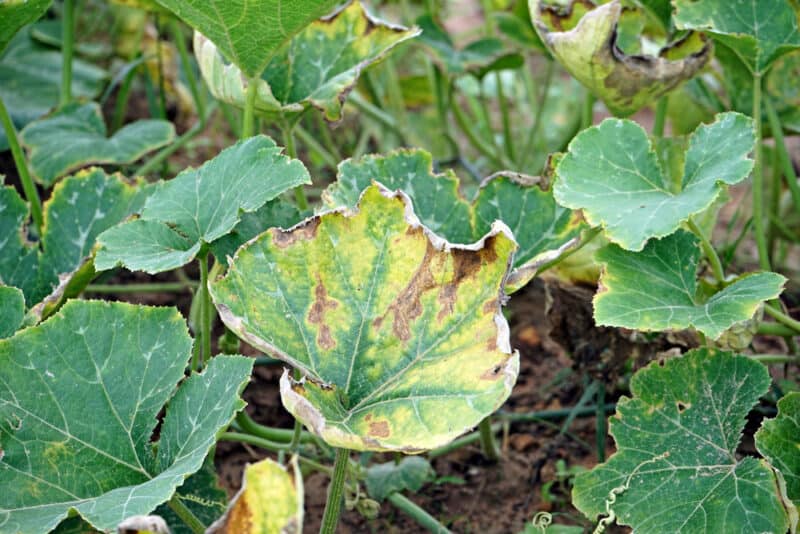
Downy mildew is one of the most common melon diseases and impacts all cucurbits and many other plants. It causes oil-like patches on the upper parts of the leaves, followed by yellowing and leaf distortion. Read our guide on how to identify this oomycete and how to treat it.
7. Anthracnose
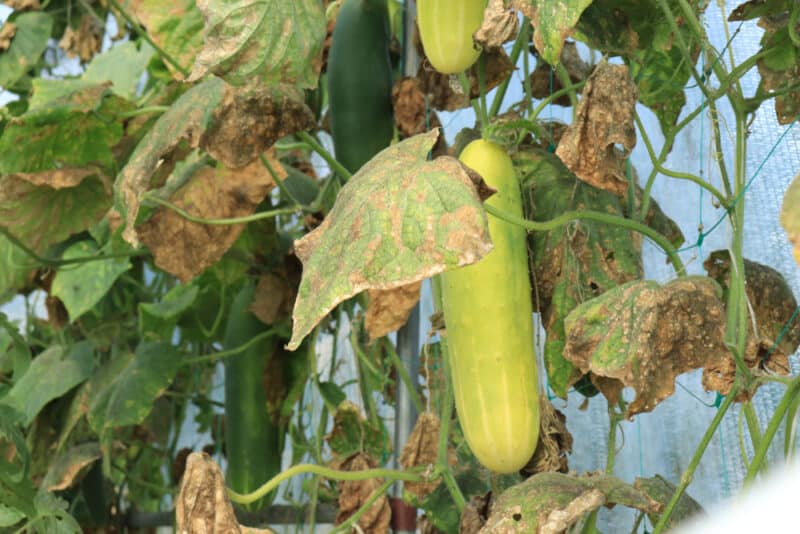
Anthracnose is bad news. It strikes quickly, can ruin your harvest, and is difficult to control. It causes small, sunken lesions that can eventually spread and merge. It can kill off young leaves entirely and causes the fruit to rot.
Visit our guide to anthracnose to learn more.
8. Powdery Mildew
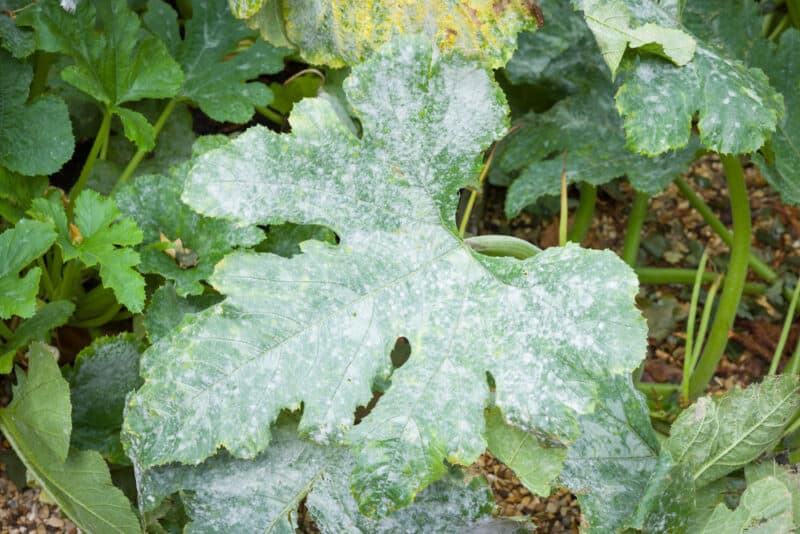
Powdery mildew is the most common of the melon diseases in warm, dry areas. As the same suggests, it causes leaves to become covered in powder-like white fungus. This can be cosmetic, or it can damage the plant enough to result in dead leaves and stunted growth.
Our guide has everything you need to know about powdery mildew.
9. Fusarium Wilt
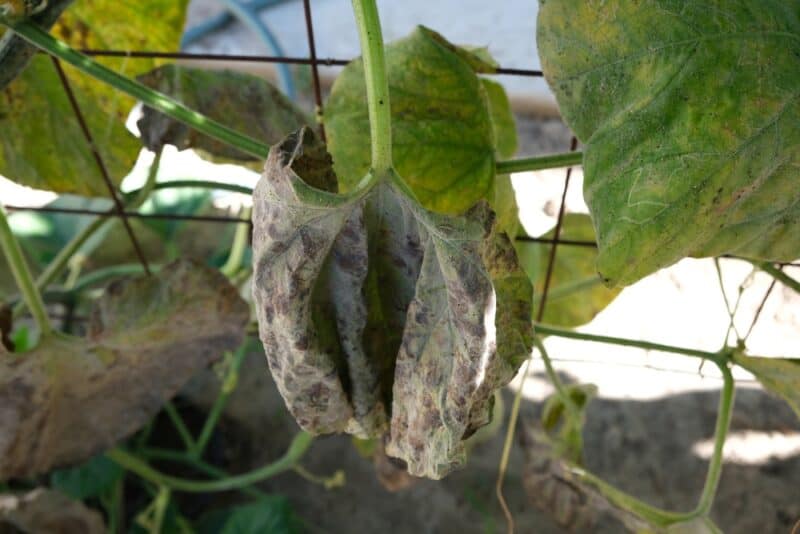
Fusarium wilt, say you might have guessed, causes the plant to wilt. First, the lower leaves turn droopy and then they might turn yellow, then brown, and then fall off the plant. As the disease progresses, it moves up the plant to the upper leaves.
If you suspect you have fusarium wilt, visit our guide to learn how to deal with it. As far as melon diseases go, it’s not as comon.
10. Alternaria Leaf Spot
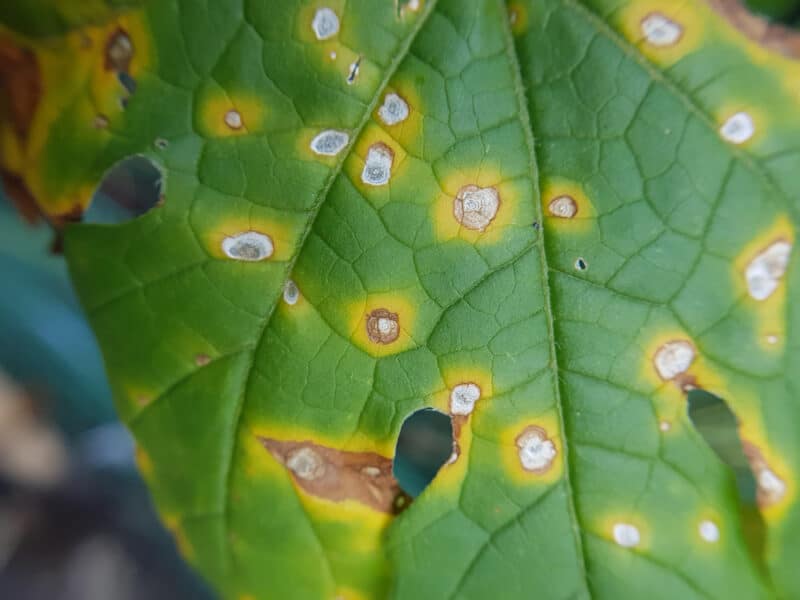
Alternaria leaf spot causes angular brown spots to develop on the leaves. These might have a yellow halo with a brown center that eventually turns dry and tan and drops out. These can merge and kill off an entire leaf.
As the leaves drop, they blow around the garden, spreading the disease far and wide. Our guide will help you get the problem under control.
Avoiding Disease
One of the reasons melons are susceptible to diseases is they’re a long-term crop. Even short-season melons can be up to 100 days before harvest.
This gives diseases plenty of time to infect your crop. Many melon diseases infect the plant in the early stages of growth but don’t show symptoms until closer to harvest.
Melons also like plenty of water and are heavy feeders, so if they don’t get what they need, they can be stressed, leaving them vulnerable to infection.
Melon diseases affect most cucurbits. This includes gourds, squash, and cucumbers. Bear this in mind when planting those crops near your melon plants.
If you prefer a chemical-free garden, practice good garden hygiene and be studious with crop rotation. Also, clear away any debris and weeds where nasty pathogens overwinter.
The best tips for growing melons are to never let them become water-stressed, plant them in free-draining soil, and provide plenty of nutrients.
